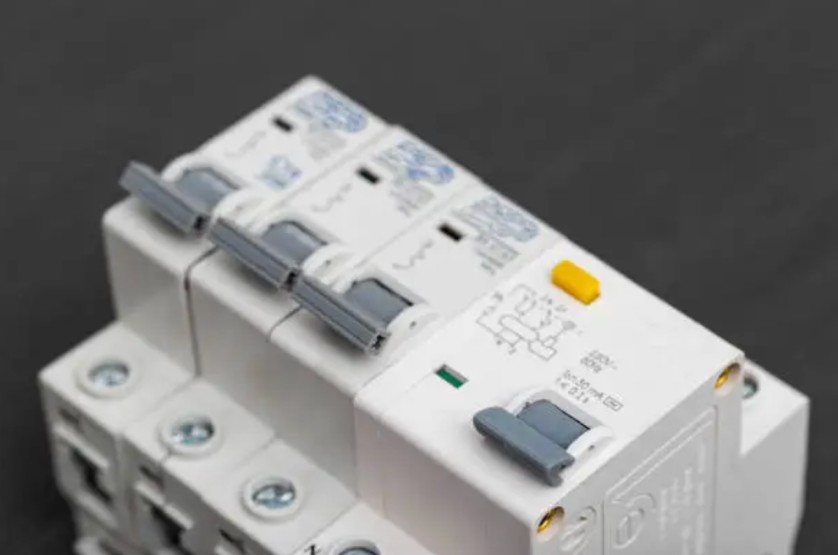As countries around the world transition to renewable energy at an unprecedented pace, solar power remains one of the most reliable avenues for producing carbon-free electricity. Large-scale solar systems, particularly in commercial and industrial settings, are now the backbone of many new energy strategies, making rigorous safety standards essential. At the front line of these standards stands the DC circuit breaker.
Conventional AC circuit breakers have served the power industry for decades, yet DC organizations raise distinct operational issues: sustained arcing when opening contacts, slower circuit interruption, and the need to protect converters’ tougher DC characteristics. Consequently, purpose-built devices have emerged to meet these solar-specific requirements. For professionals such as EPC contractors, industrial investors, and even EV charger companies that embed solar within charging ecosystems, the operational principles and strategic advantages of DC breakers are topics demanding thorough clarification.
In the following sections we will define DC circuit breakers, clarify the operational safety goals involved in deploying solar projects, summarize latest technological advancements, and detail why these devices are now essential for the most ambitious renewable integrations.
How DC Circuit Breakers Protect Solar Systems
Solar systems produce direct current (DC) from the moment sunlight strikes the panels, and this DC has to be managed carefully before it turns into alternating current (AC) via an inverter. Because DC doesn’t naturally drop to zero, breaking the current safely is trickier; a fault can create an arc that continues until the circuit opens intentionally—a more persistent and damaging arc compared to AC faults.
DC circuit breakers are the safeguard that interrupts this current quickly. They are positioned strategically at all the crucial system nodes, from the solar panels to the combiner boxes, the battery bank, and the inverter. When an overload, fault, or routine disconnection is required, the breaker isolates the affected segment, protecting downstream electronics, minimizing fire risk, and reducing costly outages. Systems operated without this hardware would be exposed to higher probabilities of equipment misoperation, thermal runaway, or catastrophic circuit damage.
For commercial and industrial developers, the breaker is more than a protective device; it is a regulatory cornerstone. Virtually every national or international standard governing solar system design specifies the incorporation of robust DC disconnect means. Neglecting this requirement would not only compromise safety but also lead to an unfieldable design, delayed licensing, and exposures to liability beyond project commissioning.
Why You Can’t Skip DC Circuit Breakers in Utility-Scale Solar Projects
Keeping solar installations safe comes down to taming the DC current. DC arcs keep burning because they don’t zero out like AC, so they can shred terminals and burn down rooftops. Breakers designed for DC snuff out the arc in milliseconds, letting the system breathe even when the sun is cranked up and the grid is sticky.
Here’s what these breakers do, in plain terms, without the jargon:
- Overload Prevention: Stops the copper from getting so hot that it loses its shape, keeping switches and inverters in one piece.
- Short-Circuit Knockout: Trips the line before heat, vibration, and smoke have a chance to spread—seconds that feel like an eternity on the safety panel.
- Safe Knockout for Techs: Trims the circuit with an orange lever so a two-man crew can replace a combiner fuse without drama.
Any commercial site that wants green energy at gigawatt scale can’t afford to wing it. Not to mention the balance sheet: a single arc event can write off a month of energy sales and draw the lawyers like moths. One EV charger manufacturer rolling out a network of solar canopied charging islands counts on these breakers to guard the chargers and the parking-lot canopies in the same sweep, keeping warranty claims and delayed inspections still parked in the lot.
Applications of DC Circuit Breakers in Solar Energy
DC circuit breakers serve several roles within the solar sector, each tailored to specific technical demands and operational contexts. The primary deployments include:
- PV Combiner Boxes: Here, breakers act as an initial protective tier, monitoring and isolating any faulty solar-string segments before they merge into the higher-voltage feeder circuit.
- Inverter Protection: Located between the solar array and the inverter, these breakers guarantee that current can be safely interrupted in the event of inverter malfunctions—or simply to facilitate safe servicing.
- Battery Energy Storage Systems (BESS): They are indispensable for switching and isolating high-voltage DC lines that connect the solar plant to the storage racks, managing charging and discharging cycles effectively.
- EV Charging Infrastructure: As solar power becomes a staple energy source at charging facilities, these breakers defend both the charging stations and the plugged-in vehicles from overload and arc hazards, thereby minimizing fire and safety risks.
In utility-scale projects, these devices are rarely standalone. Combiner-box breakers are now commonly combined with intelligent monitoring nodes that trigger rapid, automated isolations. Meanwhile, additional breakers within the battery storage racks not only guard against individual fault events but also smooth out rapid power fluctuations, preventing potential cascading failures from propagating through the larger system.
Innovations in DC Circuit Breaker Technology
The renewable-energy sector is on a fast track, taking a path so steep that even its protective technologies need to sprint ahead. Classic DC circuit breakers that once stood sentinel have now been outfitted with digital intelligence, matching the pace and scale of modern solar installations. Highlighted in the latest product releases are the following advancements:
- Fast Arc-Extinction: Revamped materials paired with streamlined geometries snuff out runaway DC arcs in a fraction of a previous cycle duration.
- Integrated Condition Monitoring: Breakers equipped with low-latency communications push live-load data to the operator’s dashboard, enabling situational awareness from anywhere.
- Modularity at its Core: Carefully engineered sliding blocks and snap-fit inserts allow a single breaker platform to swap its voltage and current ratings on-site, catering to fast-tracked C&I deployment.
- Ready-for-HV Modules: System architects are already specifying designs that exceed 1500V for solar and hybrid mega-arrays, and then some for next-gen containerized batteries. The latest breakers are touring these voltage levels with confidence.
Together, these features are emblematic of a sector marching toward pervasive digital twins, remote diagnostics, and granular energy management. The pro-forma for any new asset now pencils in lower lifecycle risks, fewer unplanned outages, and, by extension, a smaller capital outlay when selecting future breakers.
The Business Value of Prioritizing DC Circuit Breakers
Through the lens of in-depth evaluations, the DC circuit breaker no longer reads simply as a protective overhead. Instead, it completes the investment rationale for nearly every commercial and strategic consideration in a renewable project.
Business advantages include:
- Mitigated Risk and Liability: Reducing the chances of fire and equipment loss boosts investor assurance.
- Seamless Regulatory Alignment: Adhering to internationally recognized electrical standards clears the way for project nods and unobstructed financing.
- Sliding OPEX Down: Intelligent circuit breakers equipped with real-time diagnostics trim repair spending and downtime.
- Enduring Suitability: Next-generation devices are engineered to accommodate escalating voltage levels and shifting grid architectures.
For firms straddling solar and mobility—an EV charger company for instance—adopting state-of-the-art DC protection cannot be deferred. Operating without such safeguards would put project safety, scalability, and enduring success on shaky ground.
Conclusion
The DC circuit breaker may rank last on the equipment shopping list yet remains foundational to solar installations. By averting overloads, short circuits, and arc-triggered failures, modern devices protect assets and operators alike in megawatt-scale arrays. What once was purely a safety device is now a strategic asset, with intelligent analytics and future-ready voltage ratings echoing the dual imperatives of cost containment and regulatory peace of mind.
Whether you’re an EPC professional, a solar developer, or an EV charger enterprise, grasping and implementing cutting-edge circuit breaker technology is pivotal for balancing safety, compliance, and margin performance. Within the sector’s frictionless growth phase, the use of DC circuit breakers has shifted from aspirational to mandatory—the very underlayment upon which resilient, scalable solar and charger facilities are constructed.


